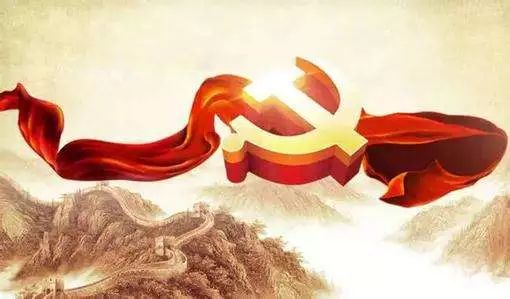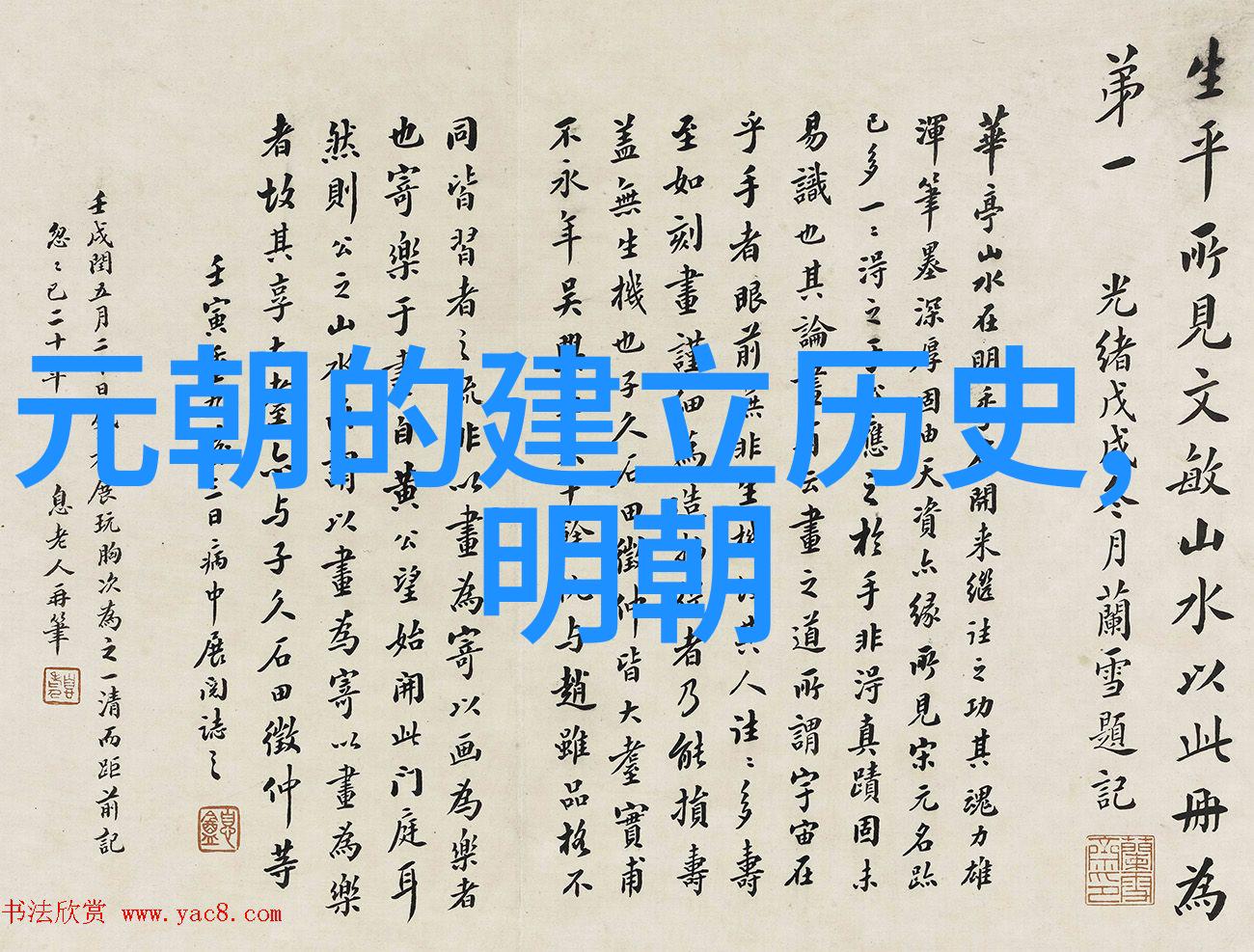
摘要:以中国共产党为领导核心的决策体系是在中国共产党领导革命、创建新中国的长期历史中形成的,有其历史合理性。 从建立到改革开放前,决策体制呈现集权化趋势。 决策权日益集中的体制存在决策结构专业化、分工程度低、制度化程度低、偏重经验决策、决策过程封闭、缺乏自我纠错等缺点。和调整机制。 这些缺点是导致文革历史悲剧的体制性因素。 改革开放后,决策制度改革的重点是在决策结构、决策方式和决策三个主要方面推进决策民主化、科学化、法制化。机制。 决策制度改革的实践证明,以决策民主化、科学化、法治化为指导的决策制度改革成功应对了我国经济社会快速发展带来的各种挑战。变化。 从政治发展的角度来看,决策制度改革的基本趋势是:从个人决策走向民主决策、从经验决策走向科学决策、从高度集中的决策组织决策组织结构分化,从封闭式决策向开放式决策转变。 决策,由被动参与决策向自主参与决策转变,由决策非制度化向决策制度化转变。 在决策制度改革实践中,初步形成了中国共产党主导、多方参与、科学论证、公开程序、依法运作的决策模式。
关键词:决策制度 集中决策 民主决策 科学决策 依法决策
凝胶:Z00
作者:周光辉,吉林大学社会正义与治理研究中心、行政学院教授
改革开放以来,中国社会发生了广泛而深刻的变化,但国家主导社会发展的基本模式没有改变,国家主导社会发展的基本途径是通过公共政策的制定和实施来实现的。 “20世纪80年代中国的制度转型经历了波浪或周期,而不是直线。每个周期都源于改革领导人的新政策。” [1]本文的中心任务不是探讨中国的决策制度如何影响中国的发展,而是运用历史系统分析方法和政治发展理论,结合当代中国决策制度变迁的实践,分析中国决策制度的形成和历史合理性、基本特征、问题及其危机,探讨中国决策制度的变迁及其发展趋势。
一、当代中国决策制度的形成及其历史合理性分析
政治决策关系到国家和社会的发展方向,关系到社会资源的权威配置,关系到社会各政治主体和利益群体的意志表达和利益平衡。 因此,在现实的政治生活中,各种政治主体和利益集团都试图以不同的方式参与和影响实际的政治决策过程。 从这个意义上说,政治决策过程实际上是一个利益妥协、博弈、寻求利益平衡的政治过程。 执政党和政府对国家和社会的领导实际上是通过政治决策的制定和实施来实现的。 现代政治分析理论已把对政治决策实际过程的分析作为政治分析的重要路径和基本方法。
[2] 所谓决策制度,是指行为主体之间的关系、决策权力的配置、运行机制、决策方法、程序规范等的总称。 在决策体系中,决策结构、决策方法和决策机制是相互关联的最重要的三个部分。
在我国的决策体系中,党的领导地位没有发生变化,但随着改革开放的进程,具体的决策结构、决策方式和决策机制都发生了重大变化。 这一现象的存在,正是引起人们对中国政治改革是否取得进展的质疑和争议。 因此,客观理性地解释这一现象就成为认识和把握中国政治体制改革的重要途径。
(一)中国的决策制度及其形成历史
中国的决策制度是在新中国成立初期就建立起来的。 在中央层面,中国的决策体系主要由“党”、“政府”、“军”、“法”、“民”五个主体组成。 其中,“政党”包括执政党和参政党; “政府”包括全国人民代表大会及其常务委员会和国务院; “军”主要指中央军委; “法律”包括最高法院和最高检察院; 而狭义的“人民”,主要指不担任国家职务的人民和社会群体。 这五位演员之间形成了“一个核心”和“四种关系”。 “一个核心”是指中国共产党是决策体系的核心主体。 《中国共产党章程》第十五条明确规定:“对国家重大政策问题,只有党中央有权作出决定。各部门、各地方党组织可以向中央提出建议,但不允许他们擅自做出决定和向外界发表意见。” [3] 中央政治局和常务委员会在中央委员会全体会议闭会期间行使中央委员会的职权。中央书记处是中央政治局和中央常务委员会的办事机构,“四个关系”是指“党政关系”、“党军关系”。 ”、“执政党与参政政党的关系”和“党群关系”(习惯上称为党群关系)。“党群关系”是决策过程中的非制度化关系。中央发布的重大决策文件最初都是以“中共中央、国务院、中央军委”的名义联合发布的,国外学者也习惯性地提及这种决策机构作为“党、政、军”决策。 系统。 [4]从决策权力分配的角度来看,“党政军”三种关系中的“党政关系”(这里的“政府”是一个广义的概念,包括“政权”、 “政府”、“政法”等内容)是最基本、最复杂的政治关系。就“党政关系”而言,中共中央特别是中共中央政治局、国务院长期以来有着非常密切的工作关系,并形成了共同签署重要决策文件的习惯。上世纪末以后,随着党政职责分工的逐步规范,这合作工作的方式已经减少,但共同签署重要文件的习惯仍然存在。
需要特别强调的是,虽然《宪法》第三章“中央组织”中没有关于设立“中共中央工作领导小组”(简称领导小组)的规定, 1958年6月10日,中共中央关于决定成立财经、政法、外交、科学、文化教育五个小组的通知指出:“这些党组隶属党中央,直属中央政治局、中央书记处,直接向中央政治局、中央书记处报告工作。 主要政策都在政治局。 具体部署在秘书处。”[5]这些常设“领导小组”不仅在中央政治局的实际决策过程中发挥着非常重要的作用,而且,它们的成立标志着中央政治局的扩大。党中央各工作部门的职能——从主要管理国务院有关部门的干部,转变为直接管理各部门的业务工作,并在一定程度上履行协调“党政”的重要职能关系”。
1840年鸦片战争以来,随着帝国主义列强入侵中国,中国传统封建皇权秩序逐渐瓦解,中国面临着两个最根本的任务。 一是如何建立独立统一的现代国家,重建政治秩序。 二是推动国家现代化、实现民族复兴。 前一个任务是后一个任务的前提和基础。 没有独立统一的国家,就没有稳定的政治秩序,就不可能实现国家的民主和繁荣。 面对中华民族全面危机日益严重的历史形势,进行彻底的反帝反封建的民族民主革命已成为时代的要求。 1921年中国共产党成立后,顺应这一历史潮流,于1927年8月1日在南昌举行了由中国共产党直接领导的具有全面意义的武装暴乱,标志着中国共产党独立建立自己的军队、领导革命。 战争的开始。 中国共产党在领导人民军队进行武装斗争的同时,把党的组织延伸到农村基层,动员和组织群众。 通过对基层社会经济结构的革命性改造,在农村建立革命根据地和基层政权,进而提升国家政权。 建造。 当代中国的“党政军”决策体系可以说是在革命根据地时期萌芽的。 1931年11月7日至20日,第一次全国工农兵代表大会在江西瑞金召开,选举产生中华苏维埃共和国中央临时政府。 11月25日,中华苏维埃共和国中央革命军事委员会成立,从而形成了“党、政、军”决策体制的雏形。 随着中国共产党领导的解放战争的全面胜利,中国共产党于1949年9月21日至29日主办了中国人民政治协商会议第一届全体会议。各界人士、国内少数民族和海外华人代表齐聚一堂,“共商建国”。 1949年10月1日,中华人民共和国正式宣告成立。 1954年9月15日,第一届全国人民代表大会第一次会议召开。 会议通过了《章程》和相关组织法。 根据这些法律,国家主席、全国人民代表大会常务委员会、国务院、最高人民法院、最高人民检察院。 至此,在长期革命斗争过程中形成的以中国共产党为领导核心的决策体系以立法形式正式确立。
(二)中国决策制度的历史合理性分析
新中国成立初期形成的决策体系,对于建立中央集权、实现社会有效整合、重建秩序发挥了关键作用。
首先,从政治角度来看。 近代以来,中国社会长期处于严重分化、“无组织流沙”的状态。 除了外部力量的介入之外,造成这种现象的主要原因有两个。 一是中央权威衰落,政治一体化无法实现; 二是决策不能在基层得到有效落实,导致整个社会陷入无政府状态。 新中国成立初期建立的决策制度有三个主要特点:一是决策权集中,表现为中共内部决策权集中;三是决策权集中。党内决策权主要集中在中央政治局; 二是决策结果的统一性,表现在决策一经作出,任何其他国家机关、组织和个人不得再提出主张,更不得表示反对,必须坚决执行; 三是决策执行的组织性。 通过从中央到基层的各级组织会议,各级决策、传达、动员,并组织实施。 这一决策体系横向保障了中国共产党对国家的政治领导,纵向实现了中央对地方政府、地方政府对基层、基层对个人的政治整合。 它不仅为中央决策的贯彻落实提供组织保障,同时也通过基层党组织的领导,促进基层群众逐步认识中央决策的合法性。 。 新中国成立初期建立的集中统一决策体制,从根本上改变了以往国家权力内部分割严重、部门多、管理薄弱的局面,有力地保证了政治权威。中央政府; 各级组织体系将中央决策传达到从城市到乡村的各基层单位,使中央决策在全国范围内得到有效落实。
其次,从经济角度看,工业化战略的实现需要广泛的社会动员,而社会动员的一个重要条件就是需要有一个能够集中统一领导的强有力的中央政治权威。 在长期的革命斗争中形成的集中统一的决策体制,以及以转业军人为主体的各级党组织和政权干部,形成了坚持自己的传统。上级和中央政府刚刚适应了现实。 需要。 这一决策体系高效的行政干预能力、综合资源整合能力、组织动员能力,为当时推动经济发展、重建社会秩序创造了政治条件。 从1949年10月新中国成立到1957年底第一个五年计划完成,无论是体制改革还是经济发展都是中国历史上最快的时期。 短短三年时间,国民经济就在战争废墟上奇迹般地恢复了。 第一个五年计划围绕“156”重大建设项目开展大规模经济建设,为我国工业化奠定了坚实基础。 基础。 对于中国这样一个经济发展水平十分落后、80%的人口为文盲、民族多样、地区差异明显的超级大国,如果没有一个相对集中的权力和政治权威的中央决策体系,没有国家政治一体化、社会动员和资源整合,就不可能成功推进现代化。
二、中国决策体系的基本特征、问题与危机
(一)中国决策体系的基本特征
由于我国决策制度形成的历史和政党制度的推行与西方国家不同,中国共产党作为执政党在国家决策体系中的地位和作用也与西方国家不同。西方国家的执政党。 西方国家实行竞争性政党制度。 大选获胜的政党成为执政党后,主要通过推荐党员组建政府来贯彻党的主张和政策。 党组织不直接领导政府。 中国不实行竞争性政党制度,这就造成了中国决策体系的两个基本特征:一是中国共产党在国家决策体系中占据主导地位。 这意味着,在决策体系中,共产党与其他决策主体的关系不是平行、并列的关系,而是领导者与被领导者的关系。 各国家机关在中国共产党的直接领导下履行各自职责。 中国共产党作为执政党,其政治领导主要是通过制定国家立法指导思想和路线、方针、政策,指导其他国家机关各方面工作来实现的。 第二,中国共产党在决策体系中的领导地位将长期不变。
(二)建国初期我国决策体制存在的主要问题
正如任何事物都有两个方面一样,新中国成立初期形成的决策体系也存在一定的问题和弊端。 决策体系的主要问题可以从决策结构、决策方法和决策机制三个方面来看:
首先,从决策结构的角度来看。 主要问题是:在决策权结构中,强调决策权的纵向划分,忽视横向决策权的职能划分。 中国共产党成立初期,基本接受了苏联共产党的建党模式,即按照民主集中制原则,建立纪律严明的等级组织,集中力量最高权力机构——中央委员会。 在长期的革命战争中,党的主要活动是领导军队进行武装斗争。 这样,政党组织和军队建设就相互影响、相互渗透。 一方面,政党的组织结构受到军事活动的影响,军队的组织属性深深烙印在政党结构中,形成了共产党组织结构的半军事化特征; 于是,以党的名义发号施令的习惯逐渐形成,导致其他国家机关在决策过程中无法正常运作,甚至出现“以党代政”的现象。
其次,从决策方式来看。 (1)决策方法以经验决策为主,决策科学化程度不高。 新中国成立初期,中央决策层均来自战争年代。 他们善于根据经验和惯性思维解决问题来做出决策,但不习惯或不善于遵循科学方法来做出决策。 (2)决策方式过于封闭,开放程度不高。 造成这种现象的原因有三:一是战争时期形成的保守秘密的习惯; 二是决策内容缺乏科学分类,不区分哪些决策涉及国家安全、军事安全需要保密,哪些是公共政策,特别是涉及切身利益的公共政策。公众需要公开; 第三,决策思想性很强,将决策过程与阶级斗争、政治斗争联系起来,将决策过程中的意见分歧与立场、路线联系起来。 政策上的分歧被公开化,在社会上造成了党内分裂的印象,所以他们不愿意公开决策。
三是从决策机制来看。 主要问题是:一是决策机制制度化程度低,决策程序结构不合理,决策程序缺乏刚性约束力,决策过程缺乏稳定性。和可预测性,导致决策过程的非标准化、主观随机性和不连续性。 性决策系统功能失调。 二是某些决策机制运行效率低下,职能发挥不正常,决策信息渠道不畅通,决策信息系统沟通功能不足,决策的实际作用发挥不彰。专家咨询制度建设有限,监督制度功能发挥不力。 三是决策机制不健全,缺乏必要的决策反馈协调机制和决策失误问责制度。 四是由于干部制度实行终身制,决策者没有任期限制,决策制度失去了自我纠错和调整的功能,导致一些造成严重社会后果的决策无法及时纠正。 。
(三)改革开放前决策体系面临的危机
历史制度主义认为,制度是在一定的社会、经济、文化历史条件下产生和发展的。 因此,特定的历史环境所形成的制度构成了其在未来不断强化和变化的路径依赖。 诺斯指出:“人们过去做出的选择决定了他们现在可能的选择。” [6]随着建国初期中央决策的成功,中国共产党主要领导人的骄傲和自满情绪不断增长,特别是通过政治革命中国共产党的建立,习惯于以革命斗争的方式、政治动员的方式、大规模群众运动的方式来开展工作。 这一时期,在加强“党的绝对统一领导”的口号下,通过开展所谓党内路线斗争,决策权不断集中。 决策权已集中在党的个别领导人手中。 长达十年的“文革”引发的社会危机,归根结底是决策制度的危机。 这种高度集中的决策体制的弊端主要体现在:一是决策权高度集中,其他决策机关难以正常运作。 由于决策权过度集中于个人,自然就会形成决策的随意性、主观性、盲目性、随意性,常常会出现重大决策失误。 其次,决策机构没有任期限制。 这意味着决策体系不存在制度化的自我纠错和调整机制,即通过领导人更迭来调整前任领导人政策的机制。 因此,即使决策出现重大失误,也无法通过正常机制来制止和调整。 三是决策过程不制度化、程序化,使得决策不规范,导致决策多变、政策不稳定、决策过程不可预测。 新中国成立后,各种大规模的群众运动不断,忽视制度建设,决策权更加集中,使现有的决策制度和会议规则流于形式,不仅使其无法实现按规定召开中央政治局会议,但连全国人民代表大会和中共代表大会都无法如期召开。
当原有系统的维护成本非常高,难以为继时,也必须更换系统。 邓小平对此有这样的判断:“二十年的经验,特别是‘文化大革命’的教训告诉我们,不改革不行,不制定新的政治、经济、社会政策不行。 ” [7] 从某种意义上说,正是系统性危机让中共和人民达成了只有实施改革才能走出困境的共识。
三、当代中国决策制度的变迁
1978年中国共产党十一届三中全会的召开,开启了中国决策体制改革的进程。 1980年8月18日,邓小平在中共中央政治局扩大会议上发表《党和国家领导体制改革》的讲话,向全党提出了改革党和国家领导体制的政治任务。决策系统。 1986年7月31日,时任国务院副总理万里发表题为《决策民主化、科学化是政治体制改革的重要课题》的讲话。 他明确表示,决策制度改革的基本目标是实现决策民主化、科学化。 科学。 1987年,中共十三大政治报告明确提出“党的决策民主化、科学化”。 这是中共历史上首次在党代会政治报告中表述这一主张,这也意味着推进民主化、决策科学化已成为全党的意志。 2002年11月,江泽民在十六大政治报告中强调“正确决策是一切工作成功的重要前提”,对改革和完善决策机制提出总体要求。 [8] 2007年10月,胡锦涛在十七大政治报告中强调“扩大各级各领域公民有序政治参与”。 他提出,推进决策科学化、民主化的重点建设领域是“增强决策透明度和公众参与”。 [9]关于我国决策制度改革,可以从四方面:确定决策体制、决策结构、决策方式和决策机制的改革目标:
一是在决策体制改革目标方面。 中国决策体制改革的首要任务是明确决策体制改革的目标。 实现决策民主化、科学化、法制化,既是中国共产党从革命党向执政党转变的内在逻辑的体现,也是实现决策制度现代化的客观要求。 决策民主化是实现人民民主的内在要求。 It is an institutional arrangement that integrates the interests and demands of all parties, opens up channels of expression, and reflects public opinion. Scientific decision-making is to introduce science into the decision-making process, use modern scientific and technological means, adopt scientific methods, follow scientific procedures, and provide technical support for correct decisions through scientific argumentation. The legalization of decision-making is to bring the decision-making subject, decision-making process and decision-making content into the scope of legal adjustment, and make decisions strictly in accordance with the law. In a modern decision-making system, democratic decision-making, scientific decision-making and legal decision-making are inseparable. In the relationship between the democratization, scientificization and rule of law of decision-making, democracy is the foundation and the purpose, and democracy stipulates the value orientation of decision-making; while science is a method and a technical means. Science cannot answer the questions between different interest groups and different values. It cannot answer the question of the value of life and the moral choices of human beings. Therefore, scientific methods can only reflect their functions if they serve the purpose of democracy; and the rule of law is the guarantee and condition for the rational and orderly operation of democratic decision-making.
Second, in terms of reform of the decision-making structure. Reforming the “unified” decision-making structure in which decision-making power is highly concentrated is an objective requirement to achieve democratization and scientific decision-making. The specific methods are: (1) On the premise of maintaining the leadership of the Communist Party in the decision-making structure, pay attention to the horizontal division of decision-making power, and conduct a reasonable division of public power according to the different functions of the ruling party and state power agencies. First, it is clear that the CCP must make decisions in accordance with the law, and that the principles and policies formulated by the CCP can only be elevated to the will of the country and become the law guiding the life of the entire country after going through the legal procedures of state agencies. Second, the CCP must ensure that the national legislative, executive and judicial organs exercise their respective powers independently and responsibly in accordance with the Constitution and laws. The provision that “the Party must operate within the scope of the Constitution and the law” is the first time in the history of the CCP that the Party has been clearly placed under the constraints of the law. In order to adapt to the changes in the party’s leadership and activities, the party’s organizational form and working institutions have been adjusted from the party center to local party organizations. Party committees at all levels no longer have full-time secretaries and standing committee members who do not serve in the government but are in charge of government work. The departments that overlapped with government agencies in the past have been abolished, and the management of administrative affairs has been transferred to relevant government departments for management. All matters within the scope of the State Council’s duties and purview are generally no longer decided in the name of the party. (2) Improve the collective decision-making system from the central to the local party. The main methods are: first, the Party Central Committee does not have a chairman but only a general secretary. The general secretary is responsible for convening meetings of the Political Bureau and the Standing Committee of the Political Bureau of the Central Committee and presiding over the work of the Secretariat of the Central Committee. The second is to straighten out the relationship between the Political Bureau and its Standing Committee, the Secretariat of the Central Committee and the Central Plenary Session, establish a system for members of the Standing Committee of the Political Bureau of the Central Committee to regularly report their work to the Political Bureau of the Central Committee, and the Political Bureau of the Central Committee to the Central Plenary Session, and actively give play to the collective decision-making power of the Central Committee. 角色; it is clear that the Secretariat does not have decision-making functions, but is only the working agency of the Political Bureau of the Central Committee and its Standing Committee; the third is to establish a system for collective decision-making through formal meetings.
All major decisions related to the overall development of the country and society, depending on their importance, are discussed and decided by the Standing Committee of the Political Bureau of the Central Committee, the Political Bureau of the Central Committee, the Central Working Conference, the plenary meeting of the Central Committee, and the National Congress of the Party; Major issues must be discussed and decided by the plenary meeting of the State Council or the executive meeting of the State Council; establish the working rules of the Political Bureau of the Central Committee, the Standing Committee of the Political Bureau, the rules of procedure of the meeting, and the life meeting system to institutionalize collective decision-making; establish major issues for decision-making system. (3) The de facto lifelong tenure of leading cadres was abolished, and a strict tenure system for leading cadres and a resignation and retirement system were established. (4) Improve the political consultation system between the Communist Party and the democratic parties, and expand the power of the democratic parties to participate in major decision-making. Democratic parties participate in political decision-making mainly through two institutionalized methods: one is to directly participate in decision-making by putting forward policy suggestions or proposals. The second is to conduct democratic consultations with the CCP before making major decisions. (5) Establish a relatively independent decision-making advisory body and improve the scientific function of decision-making structure. (6) The mass media becomes an important part of the decision-making structure. In particular, the popularization of the Internet provides a very convenient platform for different interest groups in society to interact and communicate and participate in decision-making, making the role of mass media in participating in and influencing decision-making more prominent.
Again, in terms of reform of decision-making methods. (1) The decision-making method has shifted from emphasizing empirical decision-making to emphasizing scientific decision-making. Main methods: First, establish a democratic and scientific decision-making and argumentation system. The second is to adopt scientific decision-making methods in the decision-making process. The third is to use scientific and technological means and tools to participate in the decision-making process and improve the accuracy of decision-making. (2) In the reform of decision-making form. Promote the transformation of the central decision-making form from closed to open. For example, extensively promote the news release system, the public announcement system for major events and the public hearing system, vigorously promote e-government affairs, and build a network platform for government affairs disclosure.
Finally, in terms of decision-making mechanism reform. The reform of the decision-making mechanism is mainly manifested in two aspects: First, establish and improve the decision-making procedure, that is, arrange the interrelated decision-making steps and stages in a certain order to form an orderly decision-making process. Through the programmed arrangement of the decision-making process, we can prevent blind decisions and rash decisions from happening, and ensure the realization of decision-making goals. The second is the transition from non-institutionalization to institutionalization. In order to change the past practice of leaders making decisions based on experience and ensure that the decision-making process can become a rigid and binding rule, the state has strengthened the institutionalization of the decision-making mechanism in recent years. Such as the establishment of a system for extensive solicitation of opinions, a system for decision-making consultation and coordination, an expert demonstration system, a technical consultation system, a decision-making evaluation system, a publicity and hearing system, and a system for accountability for decision-making mistakes. [10]



